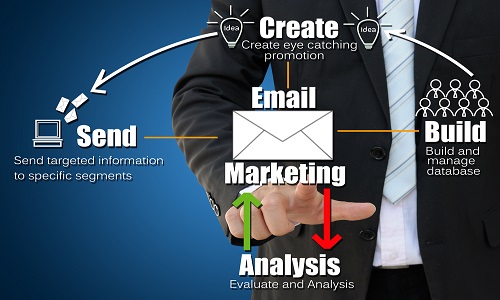In today’s digital world, having a strong online presence is essential for businesses looking to boost their sales. E-commerce website development has become a necessary tool for achieving this goal. In the advanced world of online retail, e-commerce website development is the foundation of success.
However, only having an online presence is not enough. To truly succeed and boost sales, you must strategically develop and optimize your e-commerce website. In this article, we will explore 10 proven strategies that are essential for being successful in the world of e-commerce website development.
1- Understanding Your Target Audience
Before starting to design an e-commerce website development, it’s crucial to understand your target audience’s preferences, needs, and behaviors. Conduct thorough market research to gather information that will shape your website’s design and content.
Understanding your target audience is the first step in the journey of e-commerce website development. It’s not just about creating a visually attractive website; it’s important to create an experience that connects with your potential customers. In the world of online shopping, personalization is king.
When you make the effort to truly understand your audience. You can customize your website’s design, content, and offerings to reply specifically to their needs and preferences. This level of personalization not only improves the user experience but also increases the chances of conversions.
To begin, conduct in-depth market research to identify your target audience’s demographics, interests, problem areas, and online behavior. Make use of tools like Google Analytics, social media insights, and customer surveys to collect helpful information. This information will serve as the guide for your e-commerce website development journey.
2- Optimizing Web Speed in Ecommerce Website Development
Potential customers can leave websites that load slowly. Ensure your e-commerce site is optimized for speed by compressing images, minimizing scripts, and using content delivery networks (CDNs) for faster loading times. In today’s advanced digital world, patience is a valuable resource. Slow-loading websites can drive potential customers away faster than you can say “ecommerce.” This is where the importance of optimizing website speed becomes clear.
Website speed optimization includes many technical adjustments and improvements. You’ll need to compress images to reduce their file sizes, minimize unnecessary scripts, and use content delivery networks (CDNs) to distribute your website’s data across multiple servers worldwide. These steps work together to ensure that your e-commerce website loads quickly and effectively, regardless of the user’s location or device.
The need for speed extends beyond user satisfaction; it directly affects your business line. Google’s search algorithm considers page speed as a ranking factor. This means that a faster website can lead to higher search engine visibility and therefore increase organic traffic and sales.
3- Mobile-Friendliness
Due to the increasing use of smartphones for online shopping, your e-commerce website must be mobile-responsive. A perfect mobile experience is essential for retaining and converting mobile users. The growing popularity of smartphones has completely changed the way people shop online. It’s no longer a question of whether mobile-friendly is necessary for your e-commerce website – it’s a non-negotiable requirement. Mobile devices account for a large amount of online traffic and sales. Therefore failing to respond to mobile users is a mistake that you can’t afford.
A mobile-friendly e-commerce website ensures that your site adjusts efficiently to various screen sizes and resolutions. This adjustment ensures that users have a consistent and user-friendly experience. Whether they’re shopping on a desktop computer, tablet, or smartphone. Google recognizes the importance of mobile-friendliness and selects it as a ranking factor in its search results.
4- Effective Product Listings in Ecommerce Website Development
Well-structured product listings with high-quality images, detailed descriptions, and clear pricing information can boost user trust and encourage purchases. Your product listings are the lifeblood of your e-commerce website. Consider them as the internet shelves of your online store. To boost sales, your product listings need to be more than just a list of products and prices. They need to be informative, engaging, and convincing.
Start by providing high-quality images of your products from different angles. These images should be clear, well-lit, and display the features of the product. Customers largely depend on product images to make purchase decisions, so spending on high-quality images is crucial.
Accompany these images with detailed product descriptions. Highlight the benefits and features of each product and provide any necessary technical specifications. Be sure to include pricing information and if applicable, mention any discounts or special offers. Potential customers are more confident when your product listings are transparent and clear.
5- Quick Checkout Process
A difficult or lengthy checkout procedure can cause cart abandonment. Reduce the steps required to complete a purchase by offering guest checkout options and multiple payment methods. Imagine this scenario: a potential customer has to browse your website, add items to their cart, and prepare to make a purchase. However, when they reach the checkout page, they encounter a difficult and lengthy process. They become Frustrated and remove the items from the cart, costing you a lost sale.
This usually happens in e-commerce and it highlights the importance of a quick checkout process. The checkout page should be simple, brief, and trouble-free. Avoid asking for unnecessary information and provide guest checkout options for customers who wish to make a quick purchase without registering an account.
Multiple payment methods should be available to respond to a wide range of customers. Additionally, consider offering features like saving payment information and delivery addresses for quicker future transactions. A simple checkout process increases the chances of converting visitors into paying customers.
6- Implementing Secure Payment System in Ecommerce Website Development
Security is very important in e-commerce. Use a reliable and secure payment system to protect customer data and build trust. Customer gives you with their sensitive personal and financial information when making online purchases. Any breach of trust can have negative effects on your business.
To ensure the security of your e-commerce website, it’s crucial to implement a reliable and secure payment system. These systems protect customer data, making it nearly impossible for hackers to intercept and misuse it. Display trust badges and security seals highlighted on your website to satisfy customers about the safety of their transactions.
Building trust through secure payment methods is not only helpful for sales. But also for developing a positive reputation in the e-commerce world.
7- Using Social Proof
In the digital world, social proof has a powerful impact on consumer behavior. It’s the phenomenon where people tend to follow the actions and decisions of others when they are unsure about what to do. Using social proof in your e-commerce website development can significantly boost sales.
Display customer reviews, ratings, and comments to provide social proof of your product’s quality and reliability. This can significantly influence purchasing decisions. When potential buyers see that others have had good experiences with your products, they are more likely to trust your brand and make a purchase. Encourage happy customers to write reviews and share their experiences.
In addition to customer feedback, consider including endorsements from influencers, industry experts, or well-known brands if applicable. Social proof is a psychological tool that can be used to build credibility and inspire confidence in your e-commerce offerings.
8- Personalization and Recommendation Engines
Implementing personalization algorithms and recommendation engines can increase cross-selling and upselling chances by suggesting suitable products to customers. Personalization has become a major feature in e-commerce. Consumers expect customized experiences that respond to their preferences and interests. Implementing personalization and recommendation engines in your e-commerce website development can work wonders for sales.
These engines use algorithms to look at customer behavior, preferences, and purchase history to provide personalized product recommendations. When a user logs in, they may see a curated list of products based on their previous interactions with your website. This not only increases the shopping process but also increases the possibility of cross-selling and upselling.
Amazon is a prime example of how recommendation engines can boost sales. Their “Customers who bought this also bought” section has become an essential part of the online shopping process.

9- Email Marketing Automation
Stay in touch with your customers through email marketing automation. Send personalized product recommendations, promotions, and abandon cart reminders to re-engage potential buyers. Effective communication with your customer is a key factor in e-commerce success. Email marketing automation is a powerful tool that allows you to stay in touch with your customers, monitor leads, and drive sales.
Through automation, you can send target and personalize email campaigns to your subscribers. For example, you can send abandon cart reminders to users who have left items in their shopping cart without completing the purchase. These reminders sometimes motivate customers to return and complete their orders.
Additionally, you can use email marketing to share product recommendations, promotions, and updates. Automation ensures that the right message reaches the right people at the right time, making it a highly effective sales-driving tool.
10- Continuous Testing and Improvement
E-commerce website development is an ongoing process. Regularly test different elements of your site, including design, functionality, and user experience. Data-driven information is also used to improve those elements. E-commerce website development is not a one-time project; it’s an ongoing journey of changes and optimization. To stay competitive and increase sales, you must accept a culture of continuous testing and improvement.
Use tools like A/B testing to experiment with variations of your website and measure their impact on conversion rates. Analyze user behavior through heat maps and user session recordings to identify problem areas and areas for improvement.
Moreover, pay close attention to customer feedback and complaints. This information can provide helpful guidance for making necessary changes to your e-commerce website.
FAQs
Q- What is e-commerce website development?
E-commerce website development includes creating and optimizing online platforms for businesses to sell their products or services.
Q- Why is mobile responsiveness important for e-commerce websites?
Mobile responsiveness ensures that your website is accessible and user-friendly on smartphones. Which is crucial for reaching a wider audience.
Q- How can I improve my website’s loading speed?
You can increase website speed by compressing images, minimizing scripts, and using content delivery networks (CDNs).
Q- What are secure payment gateways, and why are they essential?
Secure payment gateways are trusted systems that protect customer data during online transactions, increasing trust and confidence in buyers.
Q- Why is email marketing automation important for e-commerce businesses?
Email marketing automation allows businesses to stay engaged with customers. Sending personalized recommendations and recovering abandoned carts will probably increase sales.
Conclusion-
Effective e-commerce website development is crucial for boosting sales in the digital world. By understanding your target audience, optimizing website speed, ensuring mobile friendliness, and implementing the strategies mentioned above. You can create a successful online store that drives sales and encourages customer loyalty.
E-commerce website development is a busy and constantly changing field. By implementing the 10 strategies outlined in this guide, you can create an e-commerce website that attracts visitors. But also converts them into loyal customers. Remember that e-commerce success requires a commitment to understanding your audience. Optimizing every factor of your websites and continuously adjusting to the changing world of online retail.
As you start on your e-commerce journey, keep in mind that it’s not just about selling products. It’s about providing value and exceptional experiences to your customers. By doing so, you’ll not only boost sales but also build a brand that stands strong all the time.
So, if you like this article about E-commerce Website Development then please comment. For some more useful and informative articles, please visit www.uniqueincs.com and you also find some great Digital Marketing Products with Discounts.
If you are really interested in building your website to increase your online business then please click the below Get Website Now button. I suggest you visit the website page as it will provide you with more in-depth knowledge to build a website. You can even build your website on a low budget as well.





